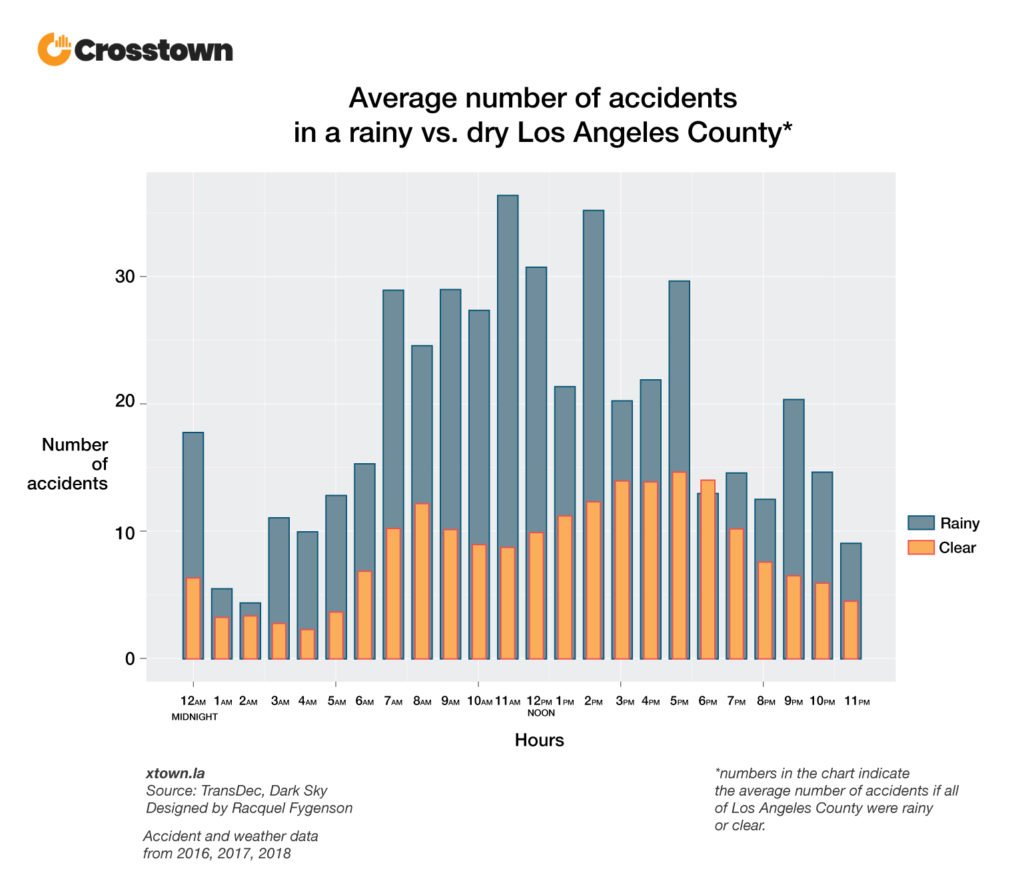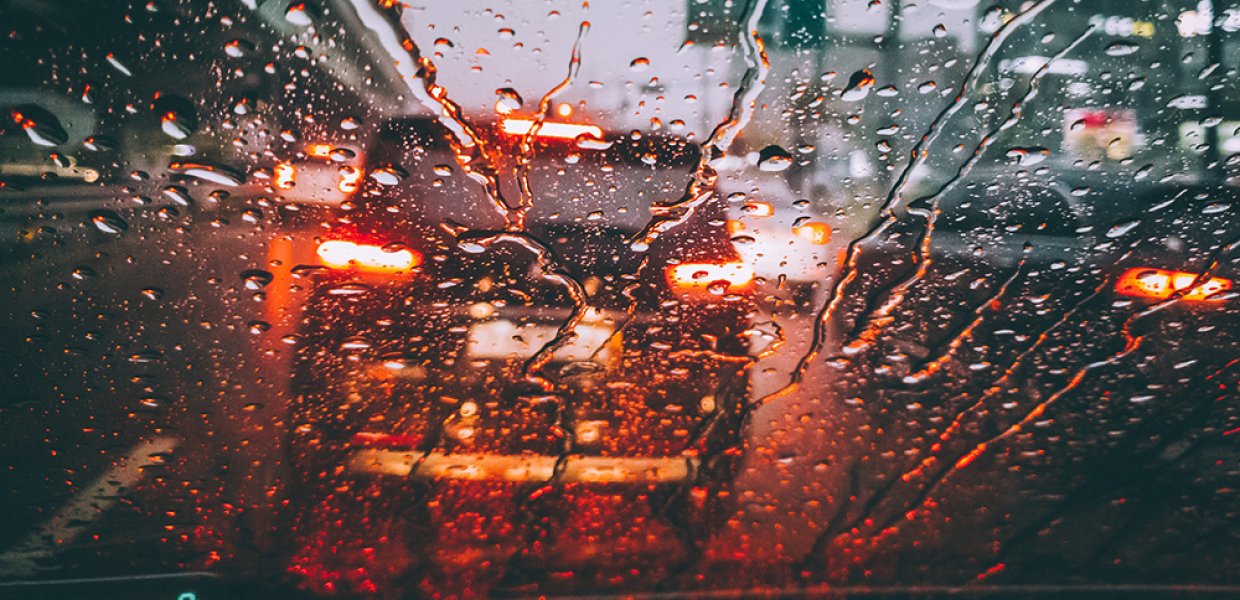As rain fell last Nov. 29, a gray Nissan sedan traveling east on the 134 Freeway crashed into a tractor-trailer. The truck lost control, according to news reports from the scene, crashed through a guardrail and careened down an embankment, where its path was finally halted by a retaining wall. No one was seriously hurt.
Of course, it is more dangerous when it rains. But the question is by how much?
As part of the Crosstown project, which uses data to tell stories about Los Angeles, Professor of Professional Practice Gabriel Kahn and I looked at nearly three years of weather and accident data to try to understand exactly how much more hazardous it is to drive in wet weather in Los Angeles. Here’s what we found on average:
- Drivers are 80% more likely to have an accident in the rain than during normal, clear conditions.
- On average, wet weather leads to a 140% increase in the number of accidents.
- When it’s raining between 11 a.m. and noon there are four times as many accidents reported than when the weather is clear.
- When it’s raining between 7 a.m. and 8 a.m., there are almost three times as many accidents.

It has been a particularly rainy winter, with Downtown Los Angeles recording more rain in the past four months than it gets in a typical year. That has meant more accidents, which, in turn, has meant more business for auto-body repair shops. Mid-Valley Auto Body in Tarzana estimates that its business this January was up 20% from this time last year because of the wet weather.
Rosalinda Tinajero of Urbano’s Auto Body and Paint in San Fernando says that the biggest crush comes right after the first rain, when grease leaking from cars has accumulated on the roadways and even a light mist can make the asphalt slick.
“When it drizzles and it hasn’t been raining recently, it’s a disaster,” she said. “The day after that, we’re full. When it rains really hard, though, people don’t seem to drive as much.”
Because Los Angeles County is so vast, spanning more than 4,750 square miles, weather conditions can vary from one part to the next. It could be raining in the mountains and sunny at the beach, or drizzling in the morning but clear at night.
In order to account for these differences, here’s how we parsed the data:
- We looked at accident data from 2016–2018 compiled in a Southern California transportation data system called TransDec. We collected weather data from Dark Sky.
- We split the county up into 236 separate grids of 16 square miles each. (We excluded some rural and mountain areas where there are no roads.)
- We queried weather data for each hour in each grid for a period of almost three years.
- We compared the total number of accidents in each grid for each specific hour during wet weather against the number of accidents in each grid during dry weather.
For example, this approach allowed us to compare rainy conditions on a Monday between 2 p.m. and 3 p.m. with clear conditions for the same hour.

Our data analysis illustrates an oddity of L.A. driving: In clear conditions, accidents are clustered like a dumbbell, rising during the morning and evening rush hour, but falling during the middle of the day.
Dry weather with heavy traffic — when cars are bunched up together — tends to lead to more fender benders. Conversely, dry weather with open roads allows drivers to cruise along with a lower risk of incident.
When it rains, the opposite pattern emerges. Accidents generally peak in the middle of the day, when traffic is lighter.
The reason why might stem from how much more dangerous it is to drive at high speeds in the rain.
“People do not make those adjustments even on a wet surface,” said Mohammad Khan, a senior staff transportation engineer with Caltrans. “That’s why you see more accidents in non-peak hours.”
The American Automobile Association cautions that in wet weather practices such as using cruise control become a hazard. Braking takes longer.
The only hour when rainy weather is safer than clear weather is in the thick of the evening commute, from 6 p.m.–7 p.m., when traffic is already bumper to bumper.
Sgt. Saul Gomez with the California Highway Patrol says that driving in heavy traffic in the rain tends to focus the mind.
“Anecdotally, it seems people pay more attention during rush hour when it rains,” he said. “When there isn’t much traffic, they let their guard down.”
This story was co-written by computer science Ph.D. candidate Mingxuan Yue and Gabriel Kahn for Crosstown Traffic.
